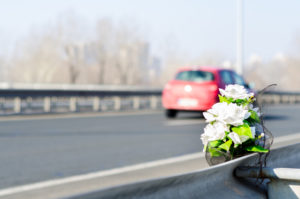The short answer to the title question is no.
A driver who operates negligent or recklessly cannot use wet or slick pavement as an excuse to avoid settling insurance claims for property damage, personal injuries or wrongful deaths. My Virginia Beach-based law firm colleagues and I have proven this in court more than once.
Do not, however, assume that a driver who loses control on an ice- or snow-covered roadway will automatically be determined to be at fault and held liable. Especially in Virginia, where the contributory negligence rule makes it impossible for crash victims to collect on insurance claims if they are at all responsible for causing the accident that harmed them, holding a speeding or reckless driver accountable following a winter weather-related crash can be difficult.
LEARN MORE
- Winter Driving Conditions Like Black Ice and Heavy Snow Can Be Challenging for Virginia Drivers
- Determining Fault in a Virginia Car Accident
- An Overview of Uninsured and Underinsured Motorist Coverage in Virginia
Consider the 75-vehicle pileup that occurred on westbound I-64 in York County, VA, on the morning of Dec. 22, 2019. A state police investigation revealed that a single driver hit a patch of black ice on a bridge after entering a bank of freezing fog, spun out and got hit by another driver. Within less than two minutes, 73 other cars and trucks had wrecked. Another eight vehicles collided on the eastbound side of the highway. In all, 51 drivers and passengers suffered injuries.
Here is how the National Weather Service defines freezing fog:
Tiny, supercooled liquid water droplets in fog can freeze instantly on exposed surfaces when surface temperatures are at or below freezing. Some surfaces that these droplets may freeze on include tree branches, stairs and rails, sidewalks, roads and vehicles. Extreme caution should be taken if travel is necessary. Freezing fog can cause black ice to form on roadways. Black ice is difficult to see and so particularly dangerous. Drive more slowly when you suspect icy conditions. For those flying, a thin layer of ice can form on aircraft, making flight very dangerous unless the aircraft is treated or has effective de-icing equipment.
I bolded the sentence on driving more slowly when icy conditions are expected. Drivers have a legal duty to adjust their behavior to road conditions. Failing to slow down when ice is likely to form on the pavement can be cited as reckless driving no matter how fast a driver is actually going.
Nearly a month after the Christmastime chain-reaction collision on I-64, troopers had not issued any tickets. That may still happen, but injured people can file insurance claims even it never does. Neither criminal nor moving violations are required to show liability for insurance purposes.
The problem most injured victims will face is deciding who to file claims against. Passengers likely have strong claims against the insurance policies of the people driving their vehicles and any other driver who crashed into their vehicles. Each driver who files claims, however, will have their case strongly contested with counterclaims of contributory negligence.
Another consideration is that several individuals likely have valid claims against the first driver who spun out on the black ice. Since that initially at-fault driver will only have limited liability coverage, crash victims will most likely need to rely on the underinsured motorist provisions of their own car insurance policies to ensure full payment of medical bills.
EJL










Comments for this article are closed.